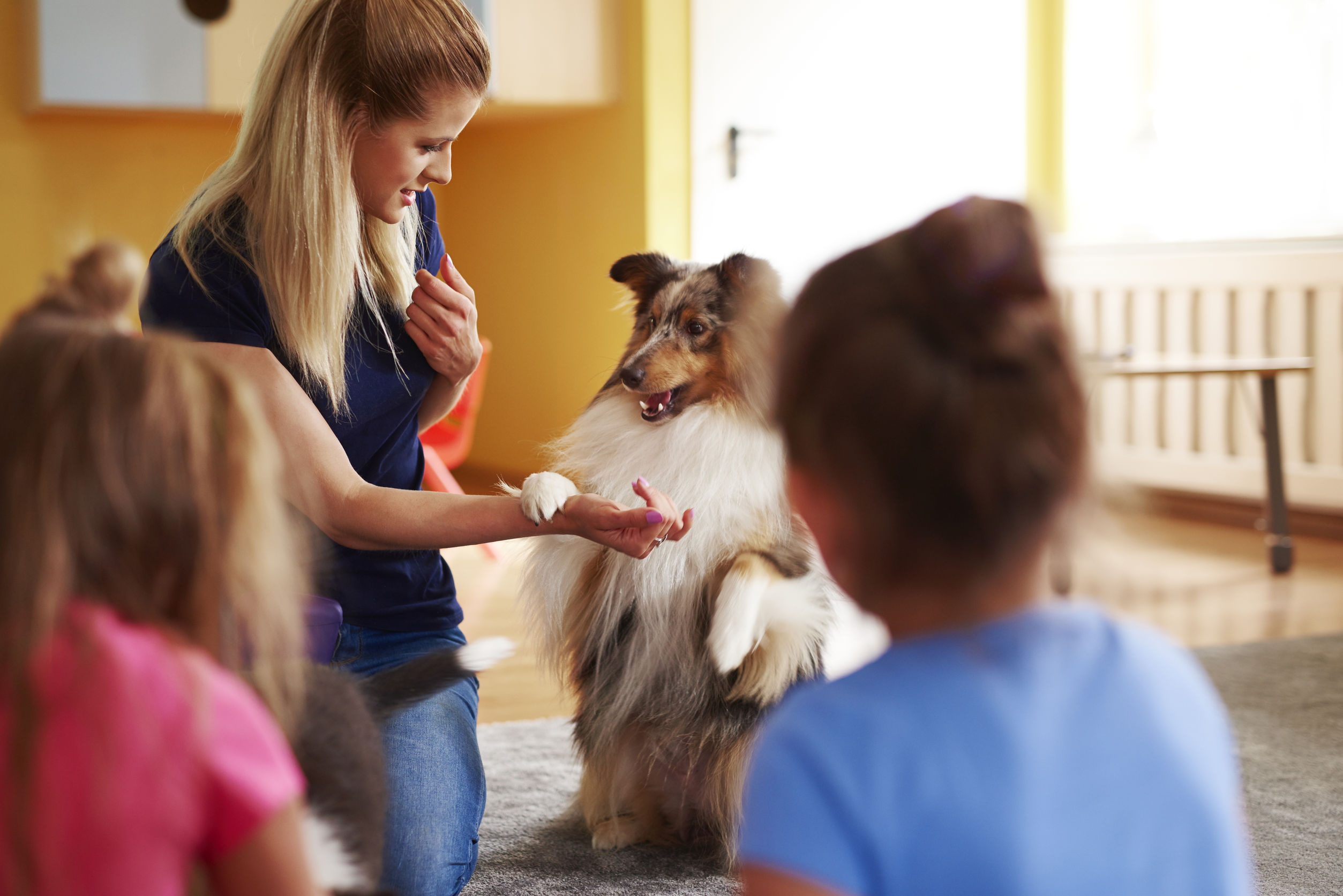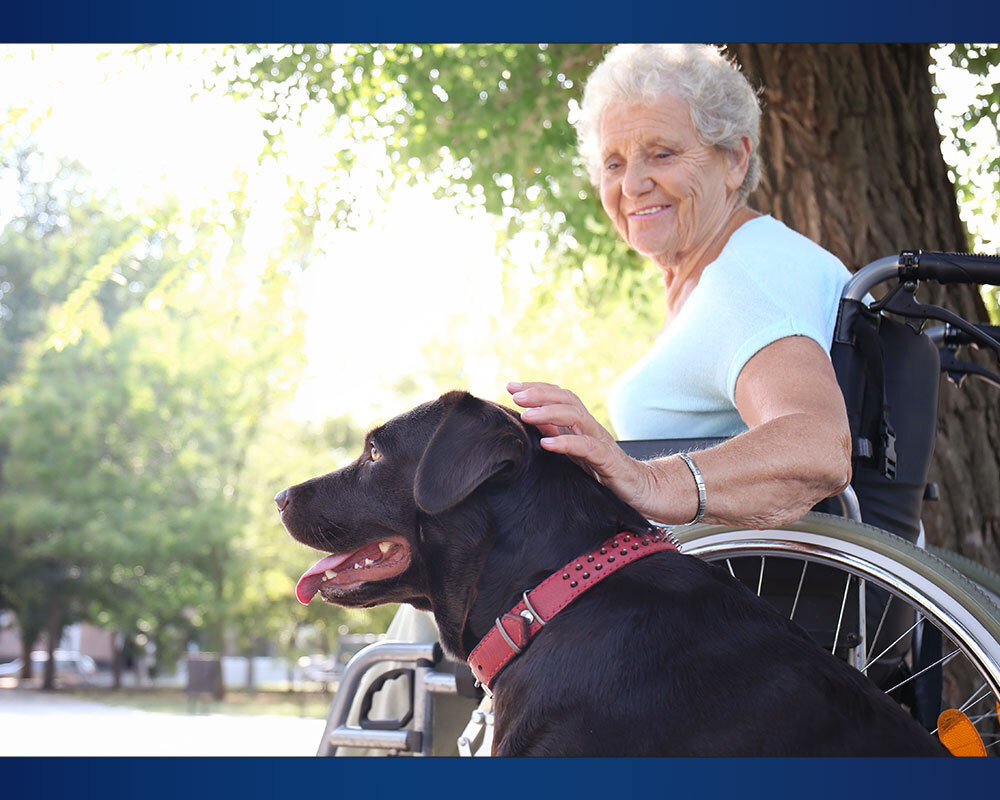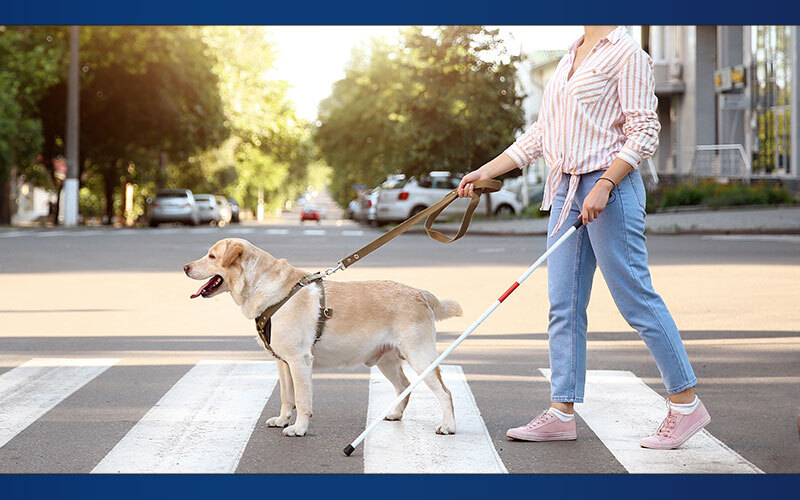
Continuing Your Service Dog Training Education
As a Service Dog handler, you know better than anyone how important dog training is. For any dog, the rewards from proper training are innumerable. In the case of working Service Dogs, the consequences could even be life-saving. In honor of Dog Training Education Month this February, we’ve outlined some general dog training tips that are helpful to remember when training your Service Dog. Whether you have a puppy or an older Service Dog, training is never over! The most important part of Service Dog training is to educate yourself.

Why Training Your Service Dog is A Continuous Process
Even if your Service Dog has been tasking for a while, keeping up with your training education is crucial. Training any dog builds a mutual bond and enriches the relationship between you. For Service Dogs specifically, that bond is the foundation of a life lived very close together. Even if your Service Dog has gone through extensive training, remember that training dogs become increasingly more important as the dog ages to help their senses and cognitive abilities stay sharp.

The Guiding Principles of Service Dog Training
Your dog’s behavior is directly related to your education in training and your ability to implement your knowledge. At any stage of training your Service Dog, there are three main principles to remember:
- Timing
According to professional trainers, you only have 1.3 seconds to correct your dog for negative behavior and 1.3 seconds to reward them for correct behavior in order for your dog to connect the behavior with the consequence. It is crucial that you reward or correct your dog after an action immediately to build those associations in your dog’s mind. Once we’ve had our dogs for a long time, we tend to be less strict on timing, but anytime you’re trying to teach your dog something new, or are trying to reinforce good behavior, sticking to that 1.3 seconds is key. - Motivation
Just like humans, your dog’s decision-making process is shaped by motivation. When they act out a positive behavior and you mark it with positive reinforcement, they will want to continue to act that way in order to receive a reward. Dogs are motivated by physical rewards, that is, through pets or treats. Verbally praising your dog is not enough. When we already have a close relationship with our dogs, we may start to think that saying “good dog,” is enough – but if you want to continue your dog’s mental development you need to keep motivating them sufficiently. - Consistency
Consistency is absolutely necessary for training. Essentially, consistency equates to clear communication. You must be consistent with your timing, your commands, and rewards. It’s only through repetition that your dog will learn. It’s important to spend a little time training your dog each day, no matter their age, to keep them stimulated and alert.
Reminding yourself of these basic concepts will help encourage you in your Service Dog training throughout your dog’s life. When you can understand how your dog’s mind works, you can connect with them deeply and maintain realistic expectations.
Other Service Dog Training Tips to Remember:
- Dogs need exercise! Any dog that has a lot of extra energy is going to find it hard to focus on training. Schedule your training sessions after you’ve exercised your Service Dog, and allow your dog to get a feel for their surroundings before you demand their attention.
- The ideal training session is 15 to 20 minutes maximum. Any longer, and dogs get tired or lose interest. It’s important that training be a fun, engaging experience and not a bore. If you or your dog become frustrated, take a break. This is a bonding experience above all.
- Positive reinforcement consists of loving physical touch and edible treats. Use healthy dog treats, and tear them up into small pieces so you can use them constantly without overfeeding your dog. Some trainers use kibble as rewards during training.
Have a Brand New Service Dog?
If you’ve just gotten a puppy and are embarking on the long and extremely rewarding journey of training them yourself, you need to start with basic obedience and potty training. The initial steps of training are called The First Five, which is a list devised by nationally-recognized Service Dog trainers to prime your dog for communication and additional socialization as quickly as possible. They First Five steps are: clicker conditioning, learning their name, learning to sit, tether training, and leash walking. Our training resources cover The First Five in more detail.
Next, you should test your dog’s obedience in different environments and ensure that he follows commands no matter where you are and what’s going on around you. Service Dogs are required to pass what’s called The Public Access Test which tests how they maintain control in a variety of situations.
Only once they have the basics of dog training down and they’ve demonstrated good behavior in public can you start teaching your dog the specific task or tasks he or she will perform for you. This may mean avoiding obstacles and moving vehicles or retrieving objects as a guide dog, or helping during a medical emergency. For a list of additional resources on how to train your Service Dog to task, refer to our training page.
Finally, the last step of training your Service Dog is to register them with an official registry such as USA Service Dogs. Registering your Service Dog helps ensure that you will be able to go anywhere together without worry. Obtaining a Service Dog vest and a tag provides visible proof that your dog is a Service animal which will prevent any problems entering hotels, restaurants, or airports, or new housing.
Celebrate Dog Training Education With Your Service Dog
Your dog does so much for you! Take time to celebrate the hard work you’ve both put into training by taking them to a dog park, buying them some tasty treats, or getting them a new toy.
Whether your dog is a guide dog, a hearing dog, or provides mobility or medical assistance, it’s vital that you continue dog training education so that you can both keep sharp and further strengthen your bond.